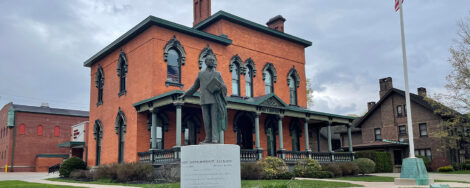In Age Of Decline, Government Remains Proudly Bloated

Shouting matches between former Trustee James Lynden and current Mayor Michael Ferguson in February speak to a lack of answers when it comes to spending in the village of Fredonia.
Call it a longtime exercise in futility. For more than a decade, this newspaper has written opinion pieces and editorials advocating consolidations, warning that numerous local governments and schools were becoming a burden for a shrinking Chautauqua County population.
Elected officials of the past — and some today — scoff at the idea, coming back to a repetitious red herring that urges area residents to believe there is value in local control. That continued fallacy is starting to become a major punishment.
Even today, the numbers are incredibly tough to fathom. Besides the county government, there are 27 towns, 13 villages, two cities and 18 school districts. All come at a high, inefficient cost to operate for a total of 124,000 residents and shrinking.
For the second time in less than five months, a massive tax increase has taken place in the north county. On Monday, the village of Fredonia approved a 65% property tax increase for its residents.
That means it followed in the footsteps of its next-door neighbor, the city of Dunkirk. Though the communities share a rivalry of sorts, no one three years ago would have predicted the two municipalities would be in a war over who could do more harm to their constituents.
For some perspective, according to seethroughny.net, the village has 102 employees listed in 2024 who work for a population of 9,455 residents. There are $4.5 million in salaries with the staff’s median income at around $44,905.
Over a 10-year period, however, the website notes there are 23 more employees in this year than there were in 2014. That means while population decreased from 10,787 — or 12%, the village has increased its workforce by 29.1%.
It is a similar story for the city. Payroll, which serves 12,442 residents in 2024, is $10.6 million for its 187 staffers in 2024. Its median income is $52,123. In the meantime, despite the current $20 million deficit, the city also had 23 — 14% — fewer staffers 10 years ago when the population was very similar.
Bottom line for these astronomical increases? It is your irresponsible local elected leaders and government at work. Despite decades of population losses – as well as a declining tax base — those you voted for kept loosening the belt until ultimately the anvil let loose. Dunkirk residents, 27% who live in poverty, received the rude awakening in recent weeks regarding tax bills. Fredonia residents, 24% who live below the poverty rate, will receive their stenchburger once the peak of summer arrives.
Poverty guidelines for a four-person family in the United States, according to one government website in 2024, are households of four that have an income of $31,200 or less. Those are the ones hurt most by the tax hikes.
Most increases — in the city and village — are expected to be between $600 to $1,200. For those still paying a mortgage, that pain comes in the escrow line. In many instances, that is the highest cost for the customer annually — topping the principal and interest rate.
Ouch.
Business could never operate in that manner. When customers and revenues decrease, the first step has to be reductions in staffing or in operations.
Government, which is habitually and greedily relying on your cash rolling into its coffers, has never worked that way. When north-county manufacturers and industries closed during the height of the Rust-Belt recession in the 1980s, public entities became more entitled. Those outfits — as well as school districts — believed they could become an economic engine for revitalization of the downtrodden region.
It has backfired big time. For growth to occur, communities need a strong private-sector base. By chasing away Carriage House in 2015 and losing NRG Energy Inc. to New York state politics and a looming lawsuit, revenues — and families — bolted.
Today, notoriously publicized tax increases could keep future investors and businesses away from not only the two locations, but the region as well. One more item to consider — when talking about this county — deals with renewable energy. Though we lost a prolific power generator that employed a workforce of around 125 at NRG in 2016, there has been no shortage of solar panels and wind turbines dotting our landscape since that time.
Highly subsidized, there’s no magic bullet in these projects. Out-of-town employees arrive when building starts and flee when the projects are completed.
Chautauqua County’s red wave has not put an end to any of these projects. At the moment, 14 Republican county legislators refuse to say a peep about the continuing tax breaks for the tall tower monstrosities and acreage of sun catchers.
Those contraptions have even empowered the tiniest of our towns. Arkwright, with its 36 turbines and population of 1,100 residents, is eyeing a new town hall as a monument to its appreciation for the government subsidies.
Your tax dollars at work — in our big burden of local government and schools. It is far from reassuring — and completely inefficient.
John D’Agostino is editor of The Post-Journal, OBSERVER and Times Observer in Warren, Pa. Send comments to jdagostino@observertoday.com or call 716-487-1111, ext. 253.




